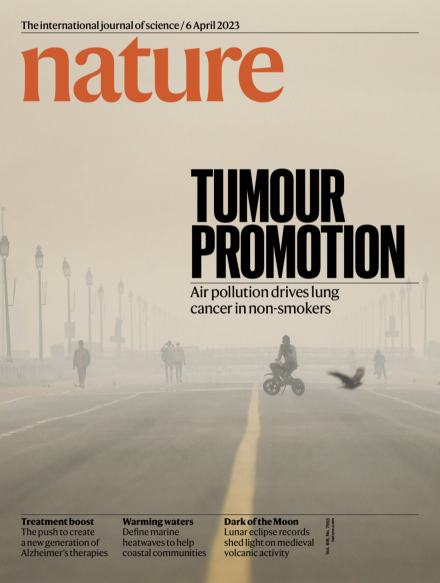Excited to share our TRACERx nature publication on circulating tumor DNA (#ctDNA, #MRD) detection in resectable lung cancer led by @AbboshChris, @AFrankell, @juditkisistok, Thomas Harrison, Aaron Garnett, @nbirkbak and @NickyMcGranahan 👇👇👇 Tweetorial🧵
nature.com/articles/s4158…
nature.com/articles/s4158…
🔬Circulating tumor DNA is a powerful biomarker that can guide and monitor treatment response in early-stage lung cancer patients. Technologies enabling ctDNA detection and characterization are advancing rapidly but we need to understand how to use them in the clinic…
👥 Through collaboration with scientists at @TheCrick and @uclcancer, @AstraZeneca and @Invitae, we developed and validated an anchored-multiplex PCR approach ctDNA detection in 197 patients who donated over 1000 plasma samples to TRACERx.
💉Detection of ctDNA before surgery predicted a higher risk of postoperative relapse and subsequent aggressive disease - but only in lung adenocarcinoma. 💭 Are adenocarcinomas releasing detectable ctDNA biologically different to their ctDNA negative counterparts?💭 

📈Multiomic analyses of adenocarcinomas releasing detectable ctDNA revealed chromosomal instability, upreg of proliferation-assoc transcriptomic pathways and copy-number gains. These tumors had high ORACLE scores, a clonal risk biomarker (@dhruva_biswas 10.1038/s41591-019-0595-z) 

This builds upon findings such as from @JakeChabon, @max_diehn and @AshAlizadeh. We also observed that preoperative ctDNA was associated with clinically occult mediastinal disease in adenocarcinoma. Could this biomarker guide neoadjuvant therapy 💊? nature.com/articles/s4158…
We next explored postoperative ctDNA detection alongside clinical metadata including imaging results, treatment and site of disease relapse. We really hope this of detail might help the design of future 🩺clinical trials🩺 using ctDNA as an MRD biomarker.
Patients with early-postoperative ctDNA detection (#MRD) were more likely to be at a higher stage at diagnosis, suffer early disease relapse and poor survival. Lead-times were longest here. 🛑This this is an at-need patient subgroup where therapeutic innovation is needed🛑 

Our findings support an expanding set of literature supporting #MRD as an important biomarker in NSCLC, including the recent manuscript from Davina Gale and Nitzan Rosenfeld (➡️ bit.ly/36G44kU) and a retrospective #ctDNA analysis of IMpower010, a phase 3 adjuvant study.
Outside of lung cancer steps are being made to incorporate #MRD into clinical decision making to guide adjuvant tx administration. See @tompowles1’s manuscript on the IMvigor010 study in bladder cancer and @JeanneTie’s manuscript in colorectal cancer. nejm.org/doi/full/10.10…
3 to 6 monthly ctDNA surveillance was able to identify impending disease relapse in 20% of landmark MRD negative patients, however lead-times in this group were shorter. Might next generation ctDNA technologies 🔍 like @ForesightDx help identify these patients earlier?
Finally, agreeing with findings from @AadelChaudhuri in unresectable NSCLC, post-intervention ctDNA detection helped interpret imaging not definitive for relapse. Reflex ctDNA testing might help tumor boards make treatment decisions earlier. pubmed.ncbi.nlm.nih.gov/28899864/
Next section 🧵! We found we could detect postoperative ctDNA, but we also wanted to know what we could learn about the process of NSCLC relapse from this signal. Research tissue biopsies can be difficult to obtain, could liquid biopsy help us here 🧬?
There are challenges to using liquid biopsy to profile which parts of the primary tumor are driving the metastatic process, mainly due to the very low levels of ctDNA encountered in this setting, @AFrankell came up with a solution 🤔💭.
To understand tumour subclonal architecture in ctDNA we built ECLIPSE (github.com/amf71/ECLIPSE), a method which allows sensitive detection of subclones and estimation of subclone size (cancer cell fraction - CCF) from plasma containing ultra-low levels of ctDNA (down to 0.1%). 

#cfDNA can capture clones across metastases to overcome sampling bias, but what about within the primary tumour? and how accurately? We found pre-surgery cfDNA could distinguish the tumour trunk from subclonal mutations masquerading as clonal in a single tissue biopsy (AUC 0.8) 

Interestingly, metastatic subclones which were expanded in pre-surgery #cfDNA compared to non-metastatic subclones: an observation also made in tumor tissue, in our companion paper (nature.com/articles/s4158…). 💥In the future could we predict the metastatic subclone from cfDNA??💥 

We applied ECLIPSE to postoperative plasma samples to track subclone dynamics over time. In CRUK0484, adjuvant chemo and nivolumab treatment were both associated with changes in growth dynamics of subclones, suggestive of subclone specific treatment sensitivities. 

More metastasising primary tumour subclones were detectable in cfDNA compared to in available relapse tissue. Despite this, 73% of patients had only a single relapse dissemination event detectable (monoclonal dissemination). E.g.s for monoclonal and polyclonal patterns below 

Patients with >1 disseminating clone (polyclonal dissemination) had poor outcome, even after adjusting for clinical outcome predictors and disease burden, suggesting that the heterogeneity of the metastatic seeding population may drive adaptation and disease progression 

ctDNA is poised to change the way patients with early-stage lung cancer are managed and help scientists understand how lung cancer spreads. We would like to thank @SU2C, @bcrf, @RosetreesT, @royalsociety, @CRUKLungCentre and all TRACERx patients for supporting this work.
We also extend thanks to the Nature team including editors @mvicaracal, our peer-reviewers for their invaluable input into the development of this manuscript and our collaborator @HugoAerts and colleagues for support with analyses of preoperative tumor volumes.
• • •
Missing some Tweet in this thread? You can try to
force a refresh









